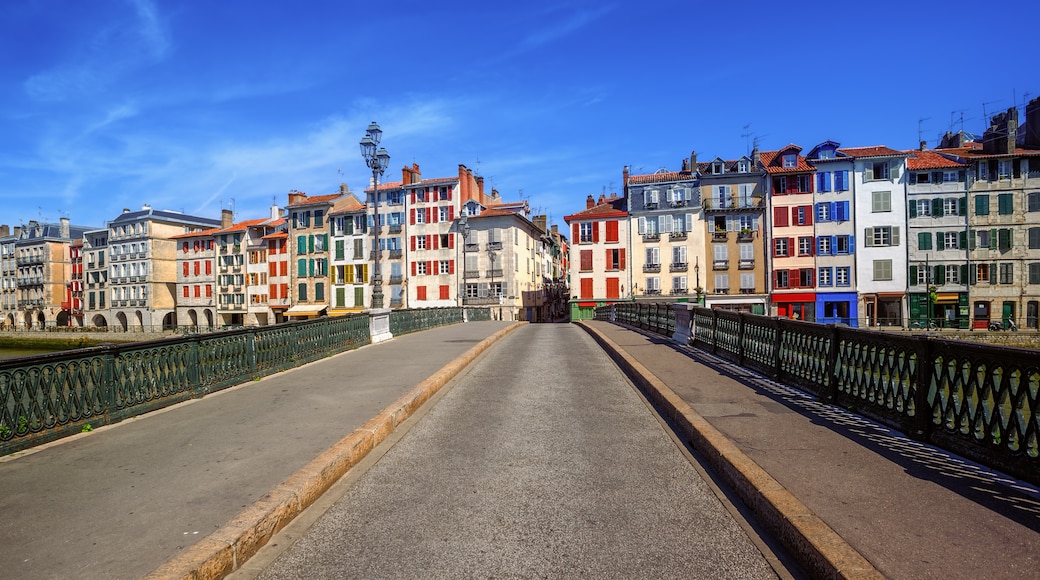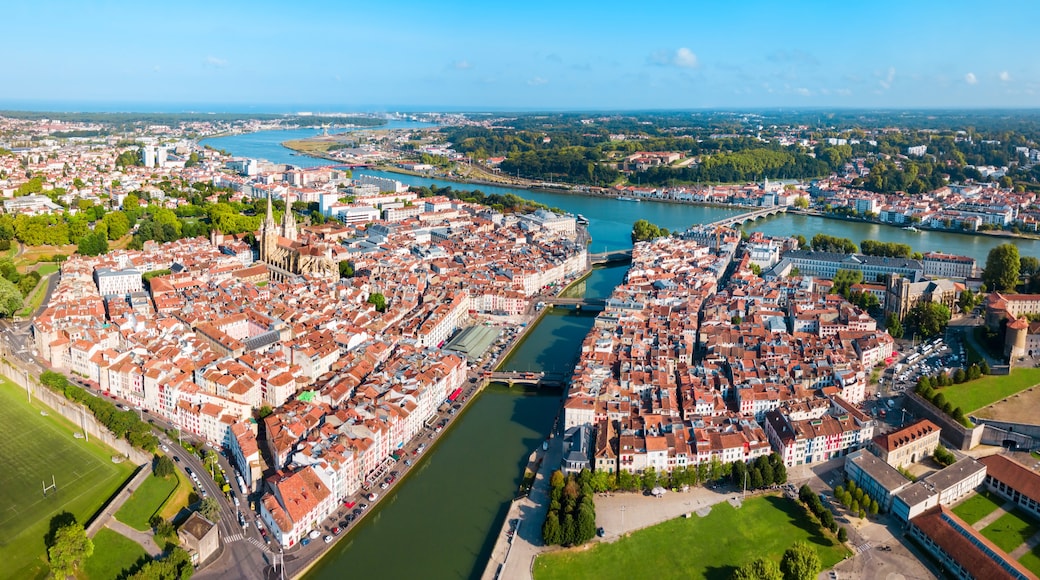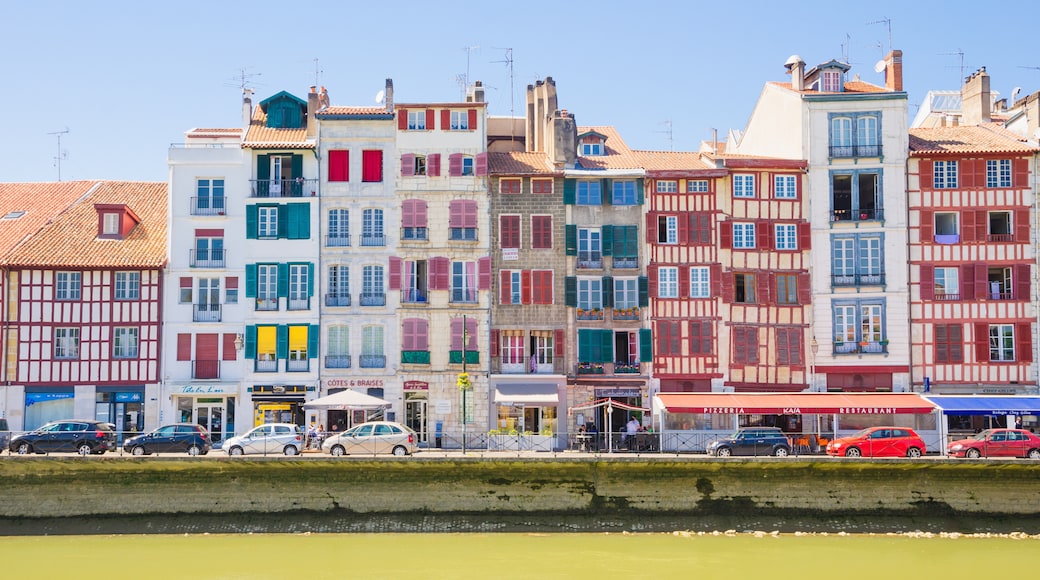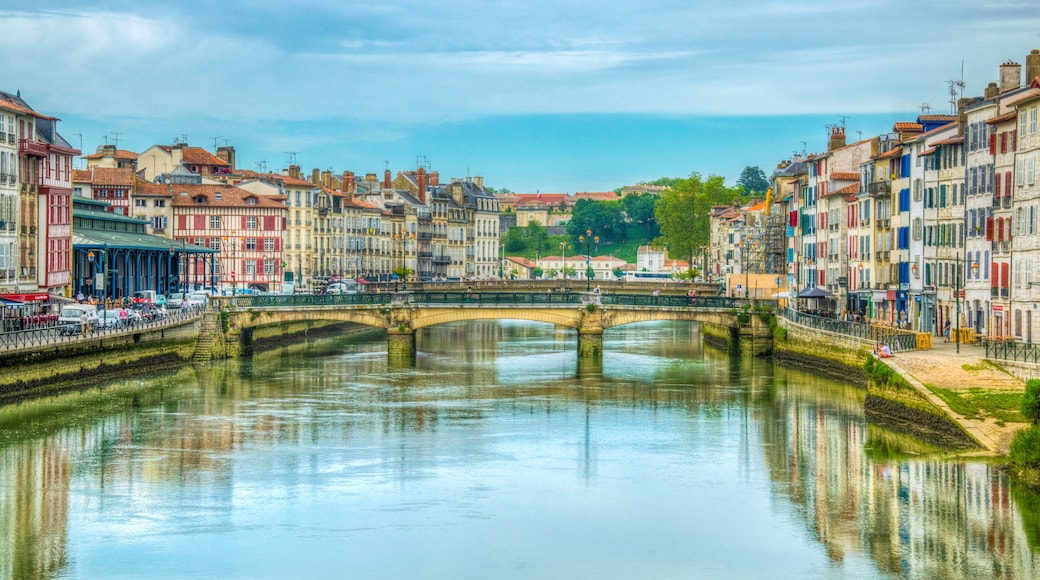Come to Bayonne and see the traditional red-roofed houses covering the hillsides, shop for cheese and meats in busy markets and watch locals playing pelote or boules in tree-lined squares.
Bayonne’s location 3 miles (5 kilometres) inland from the beach has meant that the town retains an authentic feel. Most of the city’s old town is preserved so that most of Bayonne’s original architecture remains as it has been for hundreds of years. A walk along its streets takes you past tall, timbered houses with white walls, red roofs and splashes of green paint, the colours of the Basque flag.
Learn about the area’s history with a visit to the Musée Basque et de l’Histoire de Bayonne. This museum on the banks of the narrow River Nive features a reconstructed farm and a typical Basque home. Nearby on a hill of the old town, find the Cathédrale Sainte-Marie de Bayonne. Admire the fine Gothic façade and towering spires that have overlooked the city since the 16th century. Inside you’ll find the Chapelle Saint-Jérome and its superb stained-glass window.
Stop at one of the cafés along the banks of the Adour River to try traditional Basque food such as fresh fish dishes and stewed lamb. For dessert, head to L’Atelier du Chocolat. Watch chocolate being made, taste samples and find out why there were more chocolatiers in Bayonne in 1870 than there were in all of Switzerland.
Bayonne is a small city and can be easily navigated on foot. Try the interesting route that takes you along the old fortifications. These walls are now green and covered in small parks.
Winters in Bayonne are mild but can be wet. The rest of the year has a good amount of sunshine. Summers are not as busy here as they are in the coastal towns, and Bayonne will always be quieter in spring and autumn.










